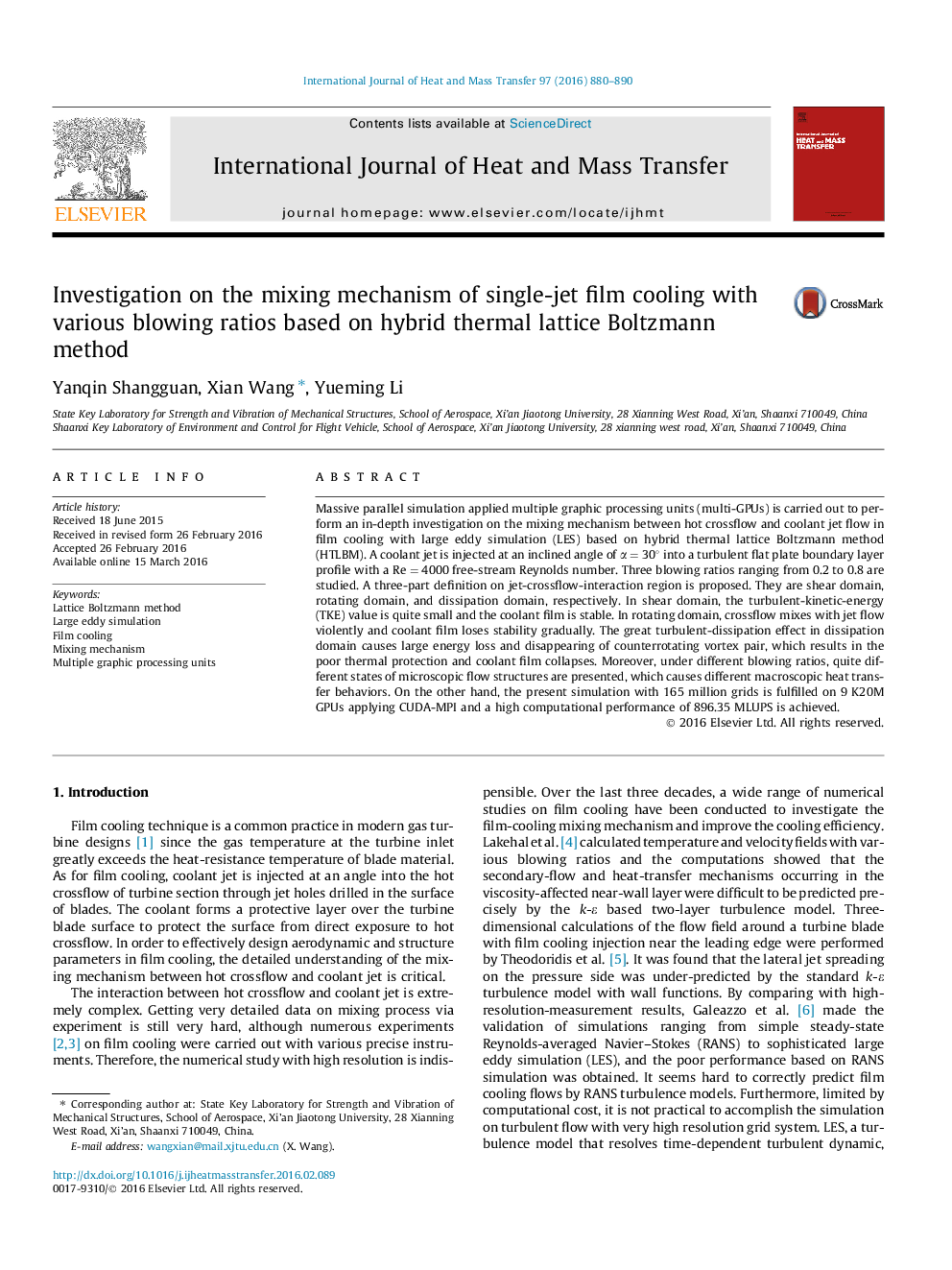| Article ID | Journal | Published Year | Pages | File Type |
|---|---|---|---|---|
| 7055811 | International Journal of Heat and Mass Transfer | 2016 | 11 Pages |
Abstract
Massive parallel simulation applied multiple graphic processing units (multi-GPUs) is carried out to perform an in-depth investigation on the mixing mechanism between hot crossflow and coolant jet flow in film cooling with large eddy simulation (LES) based on hybrid thermal lattice Boltzmann method (HTLBM). A coolant jet is injected at an inclined angle of α=30° into a turbulent flat plate boundary layer profile with a Re=4000 free-stream Reynolds number. Three blowing ratios ranging from 0.2 to 0.8 are studied. A three-part definition on jet-crossflow-interaction region is proposed. They are shear domain, rotating domain, and dissipation domain, respectively. In shear domain, the turbulent-kinetic-energy (TKE) value is quite small and the coolant film is stable. In rotating domain, crossflow mixes with jet flow violently and coolant film loses stability gradually. The great turbulent-dissipation effect in dissipation domain causes large energy loss and disappearing of counterrotating vortex pair, which results in the poor thermal protection and coolant film collapses. Moreover, under different blowing ratios, quite different states of microscopic flow structures are presented, which causes different macroscopic heat transfer behaviors. On the other hand, the present simulation with 165 million grids is fulfilled on 9 K20M GPUs applying CUDA-MPI and a high computational performance of 896.35 MLUPS is achieved.
Related Topics
Physical Sciences and Engineering
Chemical Engineering
Fluid Flow and Transfer Processes
Authors
Yanqin Shangguan, Xian Wang, Yueming Li,
